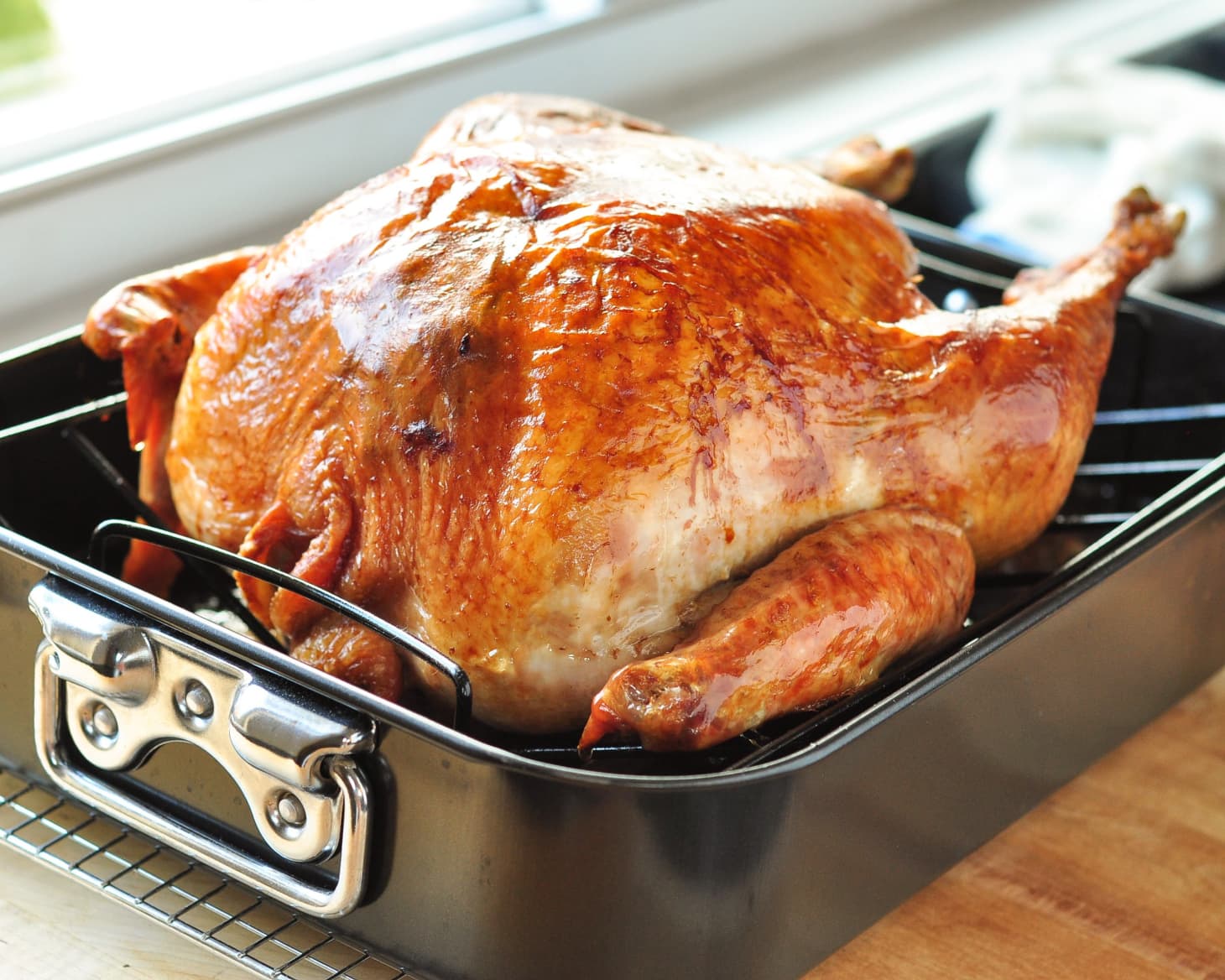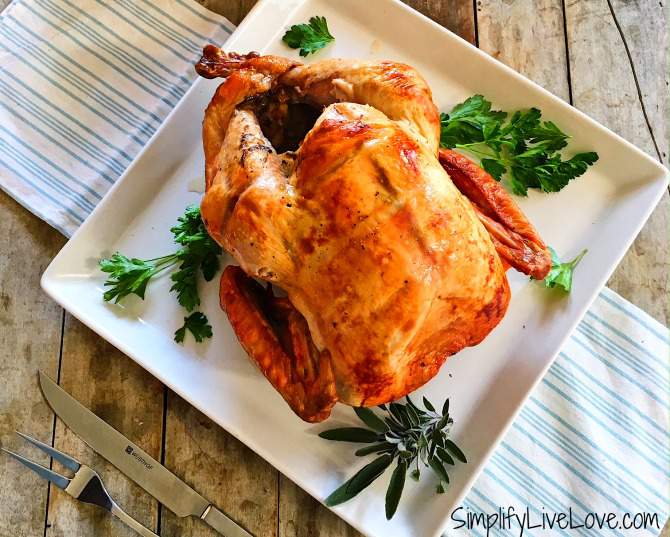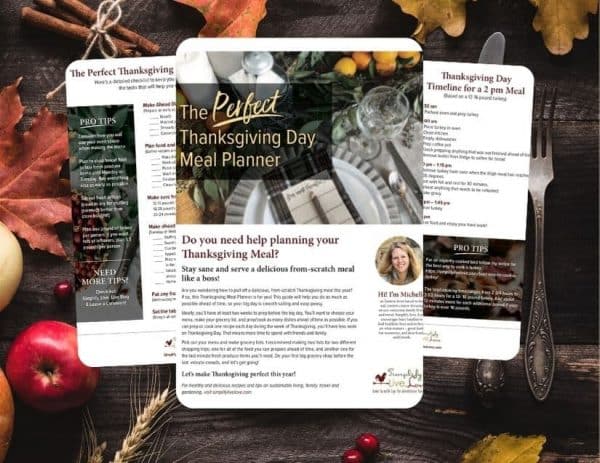By doing everything wrong over the years, I’ve found the best way to cook a turkey is to toss out everything you may have heard about the “right” things to do. High heat, upside down, no basting. These are the step by step secrets to the best turkey you’ll ever eat whether you like white or dark meat. Keep reading to learn more!
As Thanksgiving and the holiday season approaches, many home cooks start planning their big turkey dinner. When it comes to cooking the star of the meal – the turkey – a common question arises does it matter which way you cook the turkey breast-side up or breast-side down? There has been much debate around this topic so let’s take a closer look at the pros, cons, and science behind cooking a turkey each way.
Breast-Side Up: The Traditional Method
Roasting a turkey breast-side up is the traditional and most common method. Many cooks argue this is the best way to cook a turkey because it leads to a beautiful, golden brown and crisp skin, especially on the breast area which is often presented at the table.
Cooking the turkey on its back allows the hot air to circulate completely around the turkey as it roasts. The direct exposure to the heat source crisps up and browns the skin nicely. The breast meat, which is the leanest part of the turkey is kept moist by the natural basting of the juices. With breast-side up roasting you also have easy access to bast, shield, or add moisture if needed.
The United States Department of Agriculture advises roasting a turkey breast-side up for the entire cooking time. Turning the bird over mid-cook increases risks and makes for a trickier cooking process.
Pros:
- Achieves golden brown, crisp skin especially on breast
- Allows for basting and moisture control during cooking
- Prevents tearing of skin from flipping
- Gives best presentation at table
- Aligns with USDA guidance
Cons:
- Can lead to drier breast meat
- Requires tenting foil to prevent over-browning
Breast-Side Down: The Moisture Method
Although less common today, some cooks still argue that roasting a turkey breast-side down, or flipping it midway through roasting, is the superior method.
The idea is that with the breast meat on the bottom, it sits in the turkey juices as they collect in the bottom of the roasting pan. This essentially steams the breast meat from below, keeping it very moist and tender. The thigh and leg meat, which are fattier and take longer to overcook, remain exposed to the dry oven heat.
Cooking the turkey breast-down also shields the delicate breast skin from the direct heat, minimizing crisping but helping the inside stay tender and juicy. Those who prefer this method usually don’t mind the trade-off of less crispy skin for moister meat. The skin can also be quickly crisped up under the broiler after roasting.
Pros:
- Keeps breast meat very moist and tender
- Allows thigh and leg meat to cook through fully
- Prevents over-browning of breast skin
Cons:
- Breast skin won’t get crispy or browned
- Turkey juices can collect in cavity
- Unwieldy to flip large bird mid-cook
- Goes against USDA guidance
The Science Behind Juicy Turkey Meat
Achieving juicy, tender turkey meat relies heavily on avoiding overcooking, especially for the lean breast meat. Poultry has a much lower natural fat content than red meats like beef or lamb. Lower fat means less moisture and faster drying out.
Meat also starts releasing its juices rapidly once it passes about 140°F internal temperature. Since whole turkeys need to reach 165°F in the innermost breast meat, it’s easy to push the lean breast meat over the ideal juicy point.
Fatter areas like the thighs and legs don’t dry out as quickly since the fat acts as an insulator and adds moisture. That’s why breast meat is always more prone to ending up dry and overcooked.
Temperature Control is Key for Moist Meat
No matter which cooking method is used, the most important factor is closely monitoring temperatures. Lower oven temperatures around 325°F are ideal. For even heating, leave the turkey untented. Higher heat forces too much moisture loss.
Use a good digital meat thermometer to track temps in multiple areas. Once the lowest area of the breast registers 165°F, the turkey is ready. If thighs and legs need more time, tent just those areas with foil.
Let the turkey rest about 30 minutes before carving so juices can redistribute. Insulated carryover cooking will finish raising the interior temp without over-drying the meat.
Moisturizing Tips Beyond Cooking Method
Beyond cooking position, other techniques can boost moisture and tenderness:
-
Brining – Soaking the turkey in a saltwater solution before cooking infuses it with extra moisture.
-
Rubbing butter – Loosens the skin and helps baste meat during roasting.
-
Aromatic stuffing – Vegetables, fruits and herbs in the cavity add flavorful steam.
-
Basting – Regular basting adds back in lost moisture.
While the old debate continues around whether to cook a turkey breast up or down, the reality is that both methods can produce a delicious and juicy turkey when done properly. Paying close attention to temperature control and using supplemental moisture techniques are more likely to make the difference, rather than simply which direction the turkey roasts in.
As with any cooking, personal preferences will vary. Those wanting picture-perfect, golden brown skin will likely continue cooking breast up. Others seeking the ultimate tender and moist meat may prefer breast down. Whichever way you decide to cook your turkey, following good temperature and moisturizing practices will ensure you have lots to be thankful for this holiday season!

Would you like a free printable Thanksgiving Planner?
If you’re feeling overwhelmed this year, let my printable Thanksgiving planner help you simplify Thanksgiving Day! Including checklists, menus, timelines and more, this free printable will help you organize for the most successful Thanksgiving Dinner ever!
How Long to Roast the Turkey
Make sure the wings are tucked underneath so they don’t burn. Cook the turkey for 45 minutes to one hour longer, or however long it takes for the internal temperature to reach 165 degrees in the thickest part of the thigh. Also check the thickest part of the breast meat too. (Just to reiterate, the turkey in the above picture is breast side UP).
The biggest question people have when roading a turkey is how long to cook it. The total cooking time ranges from 2 3/4 hours to 3 1/2 hours for a 12- 16 pound turkey. Add about 13 minutes more for each additional pound if your turkey is over 16 pounds.
If you don’t have an oven safe thermometer, you can use the stick variety too. Just realize that every time you open the oven to check the turkey, it’ll dry out the meat a little bit more.

Finally, when the turkey is fully cooked, remove from oven. Loosely tent with foil and let turkey rest for at least 30 minutes before carving. This is very important!! Don’t slice it on the cutting board for at least a half an hour.
While the turkey is resting, use the pan drippings in the bottom of the roasting pan and make a delicious turkey gravy. Homemade gravy is actually really easy. Here’s all you need:
- 4 tablespoons meat drippings
- 1/4 cup all purpose flour
- 2 cups stock, use a high quality stock – homemade is best
- Salt and pepper to taste
Get the full recipe + troubleshooting tips: How to Make Gravy

While you don’t have to have all of these kitchen tools to cook your Thanksgiving turkey, they will make the process easier. Here’s what we recommend to get the best roast turkey!

How to Cook a Turkey
FAQ
Which direction to cook turkey?
Does it matter which way you put a turkey in the oven?
Is it better to cook a turkey upside down or not?
What is the general rule for cooking a turkey?
